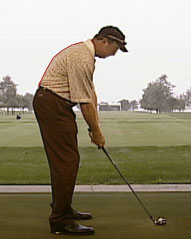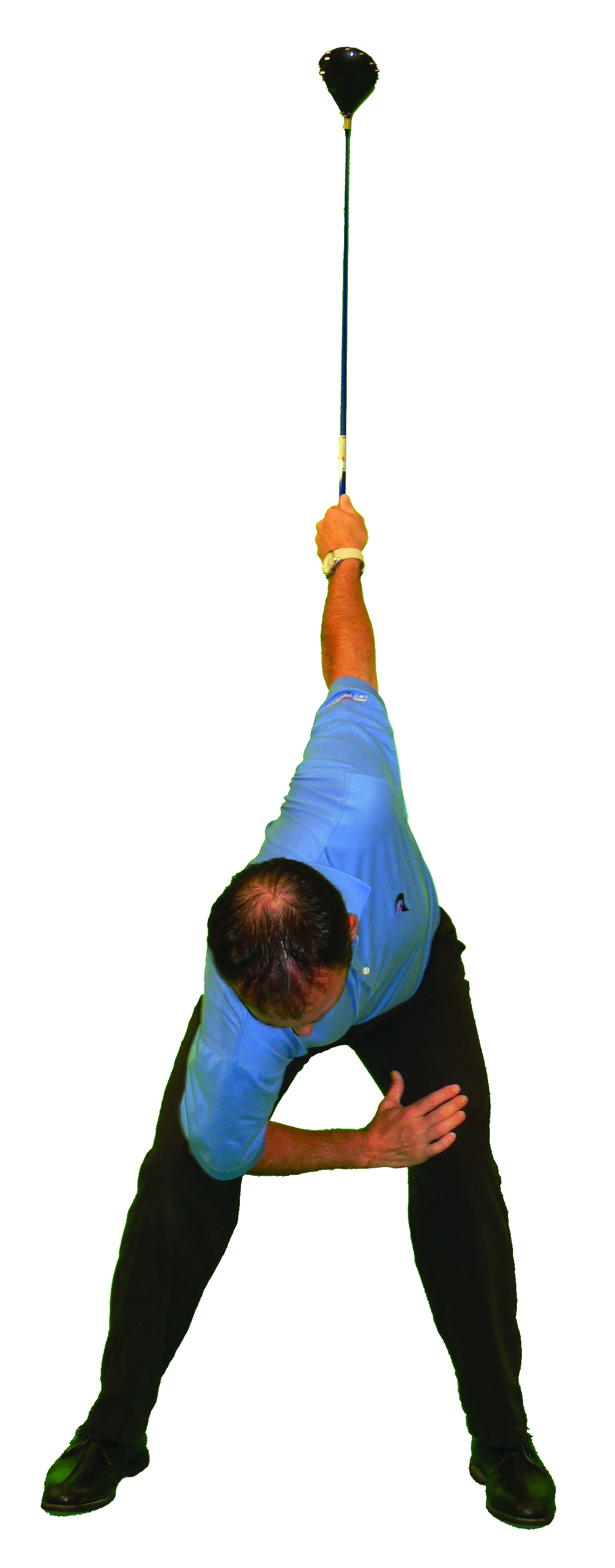IMPROVE MY GAME
Articles
C-Posture
Sat Dec 8, 2012 by Greg Rose
C-Posture.

Any excessive rounding of the upper back or thoracic spine in your golf posture is termed a “C-Posture”. This posture can simply be the result of a poor set up position, and can be corrected by physically adjusting your posture to a more neutral spine. Unfortunately, the majority of C-Postures are caused by a series of muscle imbalances and joint restrictions that are developed over many years.
Simply, telling yourself to stop rounding your shoulders or trying to straighten your spine will not make a significant change and can be detrimental to your golf swing. Actually, most of our research shows that if your C-Posture is a result of muscle and joint imbalances that the only way to correct this posture for good, is to address these limitations in the gym.
The muscle imbalances seen in the C-Posture are listed below and are collectively called an Upper Crossed Syndrome. This term, Upper Crossed, was first coined by a physical therapist from Prague, Czech Republic named Vladimir Janda. Janda noticed the same pattern of muscle imbalances on so many people in the population that he started calling the pattern an Upper Crossed Syndrome.
Upper Crossed Syndrome:
| Tight or Shortened Muscles | Weak or Inhibited Muscles | |
| Pec Major and Minor | Serratus Anterior | |
| Upper Trapezius and Levator Scapula | Deep Neck Flexors and Lower Trapezius | |
| Lats and SCM |
The most significant joint restriction seen in the C-Posture is the lack of thoracic spine extension (limited backward bend or arching of the upper back).This can make it virtually impossible to eliminate the C-Posture.This can lead to a severe loss of spinal rotation, which in turn will limit your ability to create a good backswing turn.
To help eliminate the C-posture you should focus on the following fitness routines:
- Thoracic extension exercises (press ups, reachbacks, prone to supine rolling, etc.)
-
Activating the muscles between your shoulder blades like the lower trapezius (reach, roll and lift, I's Y's and T's, rows, etc.)

- Mobility exercises for the chest (90/90 pec stretches, a-frame stretch, open books, etc.)
Best of luck - Dr. Rose
